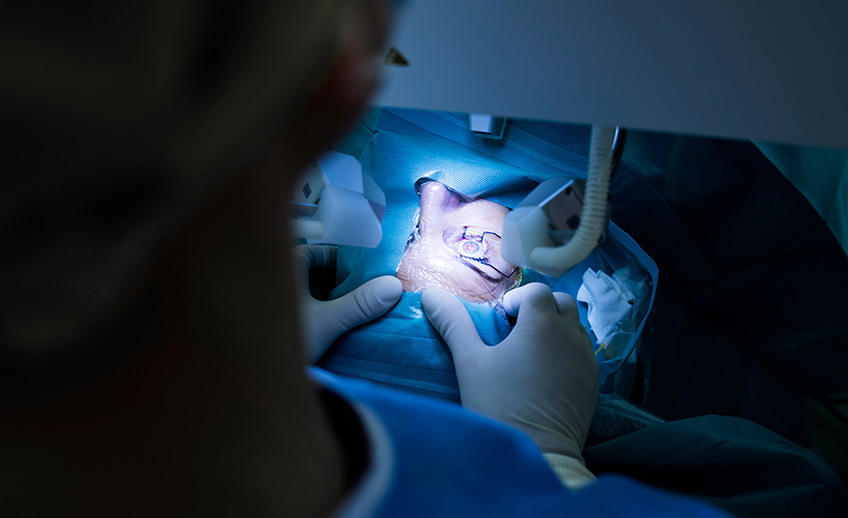A cornea transplant or graft replaces damaged tissue on the eye’s clear surface (cornea) with healthy corneal tissue donated to a local eye bank. An unhealthy cornea affects your vision by scattering or distorting light and causing glare and blurred vision. A corneal transplant may be necessary to restore your functional vision.
Corneal transplants are performed routinely. In fact, of all tissue transplants, the most successful is a corneal transplant. More than 40,000 cornea transplants are performed in the United States each year, according to the Eye Bank Association of America 2008 Statistical Report.
While most people undergoing a cornea transplant can expect a good outcome, graft rejection can occur. However, medical management of graft rejection often can lead to healthy graft survival.
Penetrating Keratoplasty (PK) is a full-thickness transplant procedure where a circular button-shaped, full-thickness section of tissue is removed from the diseased or injured cornea, followed by placement of a full-thickness donor corneal graft. Interrupted and/or running sutures are placed to minimize post-operative astigmatism. Later, the sutures are removed selectively to reduce the amount of astigmatism present. A transplant can last decades with proper care. However, postoperative recovery time is relatively long, sometimes taking years to achieve best-corrected visual acuity. While once the most prominent type of corneal transplant, PK has been supplanted by partial thickness techniques such as DSAEK.
A newer version of corneal transplantation, DSAEK ( Descemet’s Stripping Automated Endothelial Keratoplasty), is a surgical method that uses only a very thin portion of the cornea for transplant. DSAEK is currently recognized as the “state-of-the-art” in the endothelial keratoplasty field. DSAEK is a form of corneal transplantation in which only the diseased or damaged endothelial cell lining is replaced with a new endothelial cell lining harvested from a donor cornea. There is recovery of functional vision within several weeks to a few months (rather than 12-18 months with full-thickness cornea transplantation) and the procedure is safer and less invasive.

